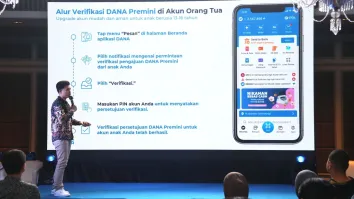
Singapore vital in Southeast Asia’s digital economy: report
The city-state led in digital payments last year as the region’s economy is projected to reach $1.299t by 2030.
Southeast Asia’s digital economy is projected to reach $1.299t (US$1t) to $2.599t (US$2t) by 2030 as regional integration and real-time payments accelerate adoption, HSBC and Google Cloud said in their Digital Frontiers 2030 report.
Singapore, which attracted $192b (US$142b) in foreign direct investment in 2024, will play a vital role in unlocking the region’s potential.
“Southeast Asia’s digital transformation is accelerating rapidly, with Singapore at the forefront of this shift,” said Shayan Hazir, chief digital officer, Asia (xHK) & MENAT, HSBC.
Singapore’s regulatory environment continues to enable innovation in digital finance, the report said.
The report, which was made in partnership with Payments and Commerce Market Intelligence (PCMI), studied how programmable money, embedded credit, and AI-driven automation are used in Asia.
Digital seller platforms will occupy all areas of the Southeast Asian economy, with 75 million digital entrepreneurs already driving 58% of Asia’s digital economy, generating (US$175b) in gross transaction volume in 2025, and is expected to reach US$580b by 2030, the report said.
The marketplace model is expanding to new verticals and cross-border integration that create more opportunities for entrepreneurs, it added.
Demand for embedded, personalised credit is rising amongst the region’s affluent consumers, with 77% using embedded finance via wallets, Buy Now Pay Later (BNPL) applications, or in-app credit.
BNPL solutions are expected to represent 25% of online transactions by 2027, ahead of global averages, HSBC and Google Cloud said.
Over half of Asian consumers (67%) cite speed as their main concern when making payments, with 57% concerned about security.
Speed and security are consumers’ payment preferences across ASEAN. Regional cross-border payment volumes are projected to boom by 2030, as instant payment networks and stablecoin adoption expand.
Agentic commerce and programmable money, in which AI agents independently manage payments, credit, and purchasing on behalf of users, are rising.
Automated commerce and programmable money powered by agentic AI and stablecoins will be used by 70% of Asia Pacific businesses by 2026, the report said.



















 Advertise
Advertise







